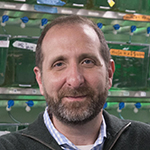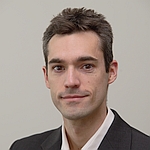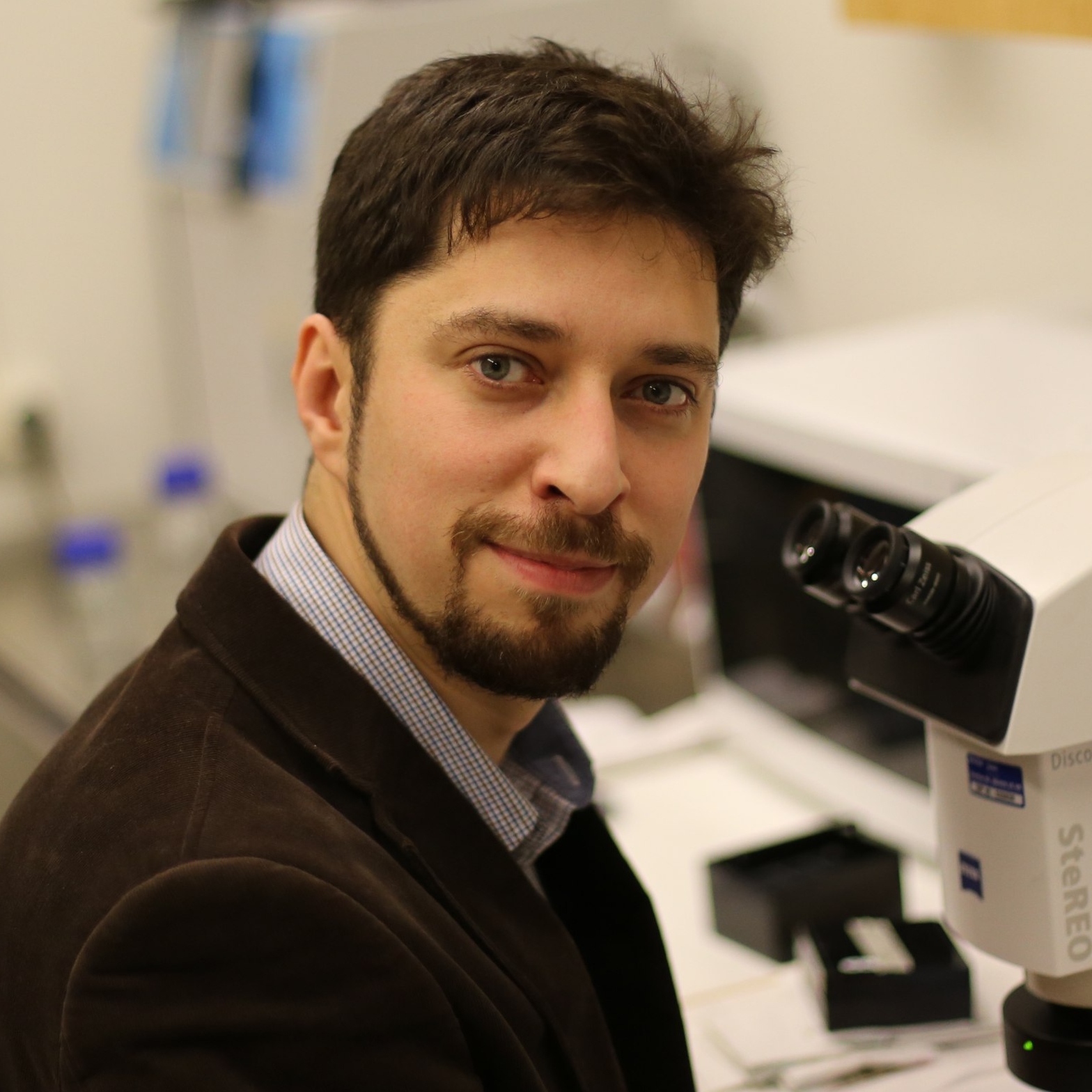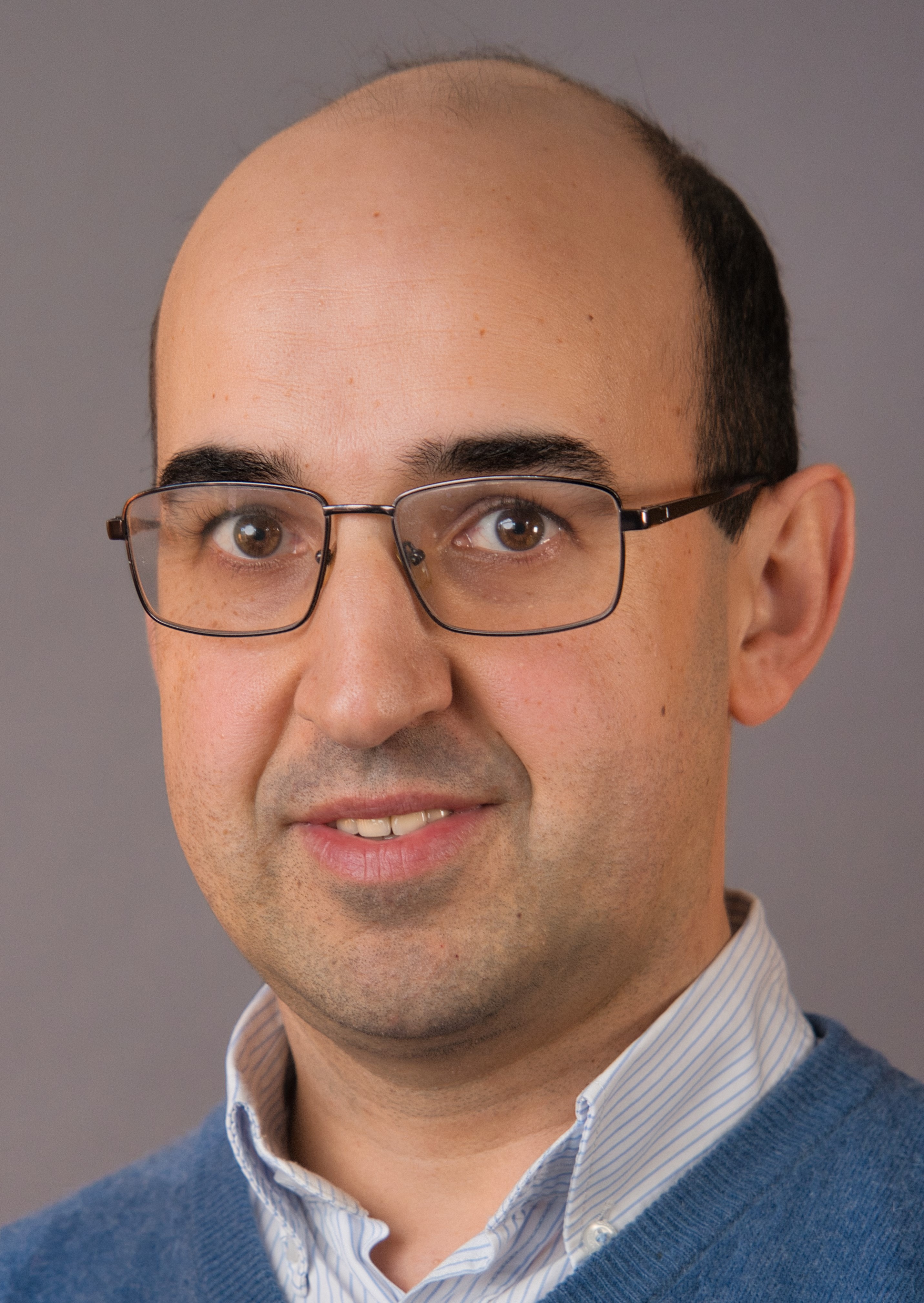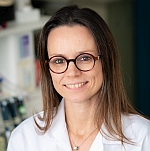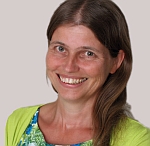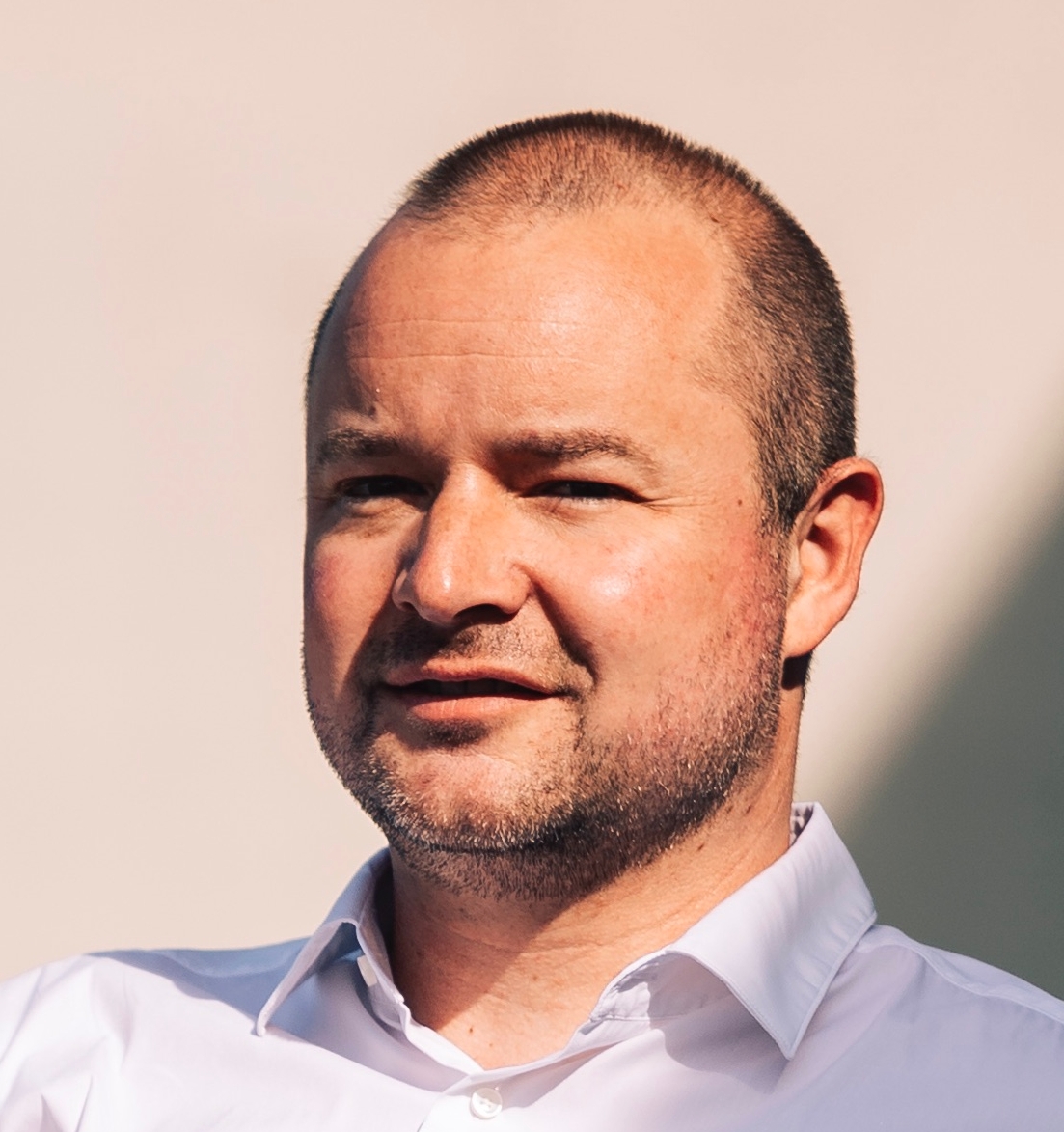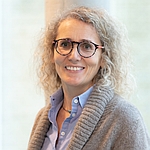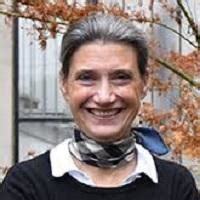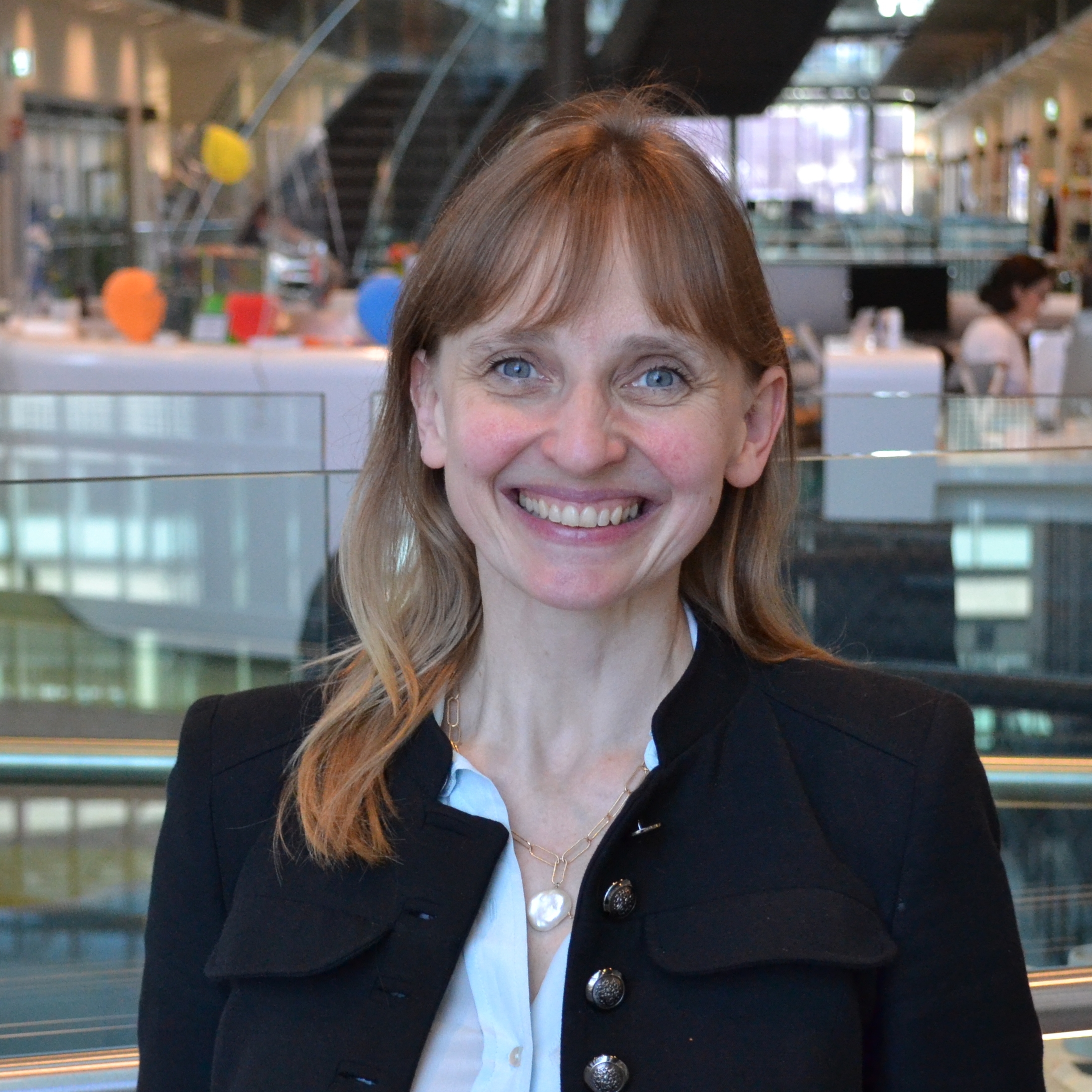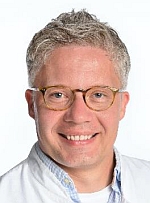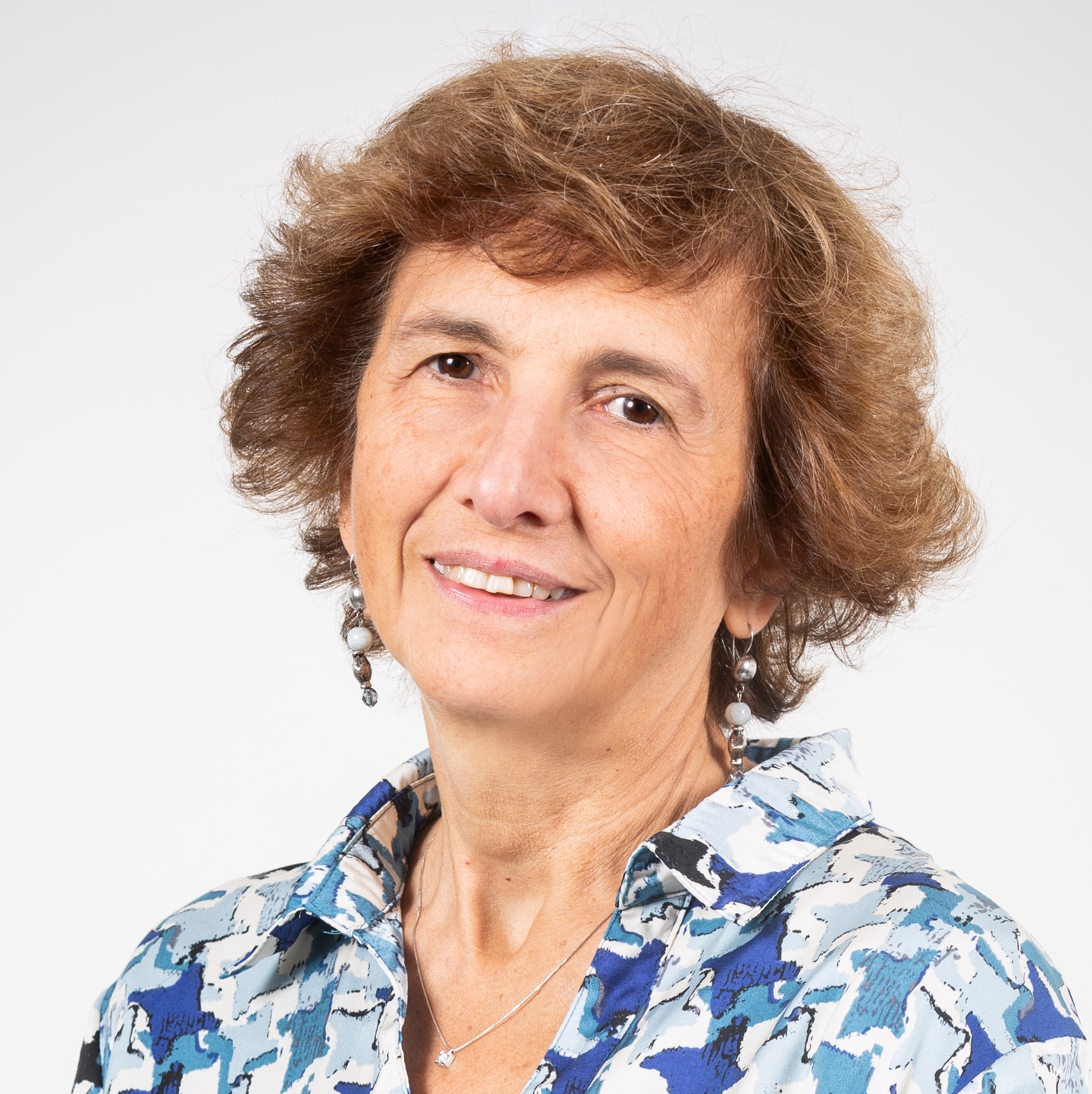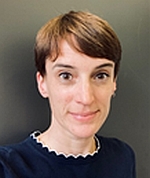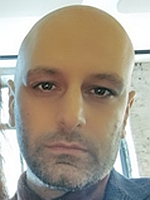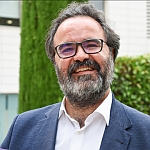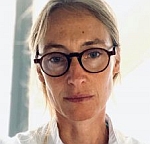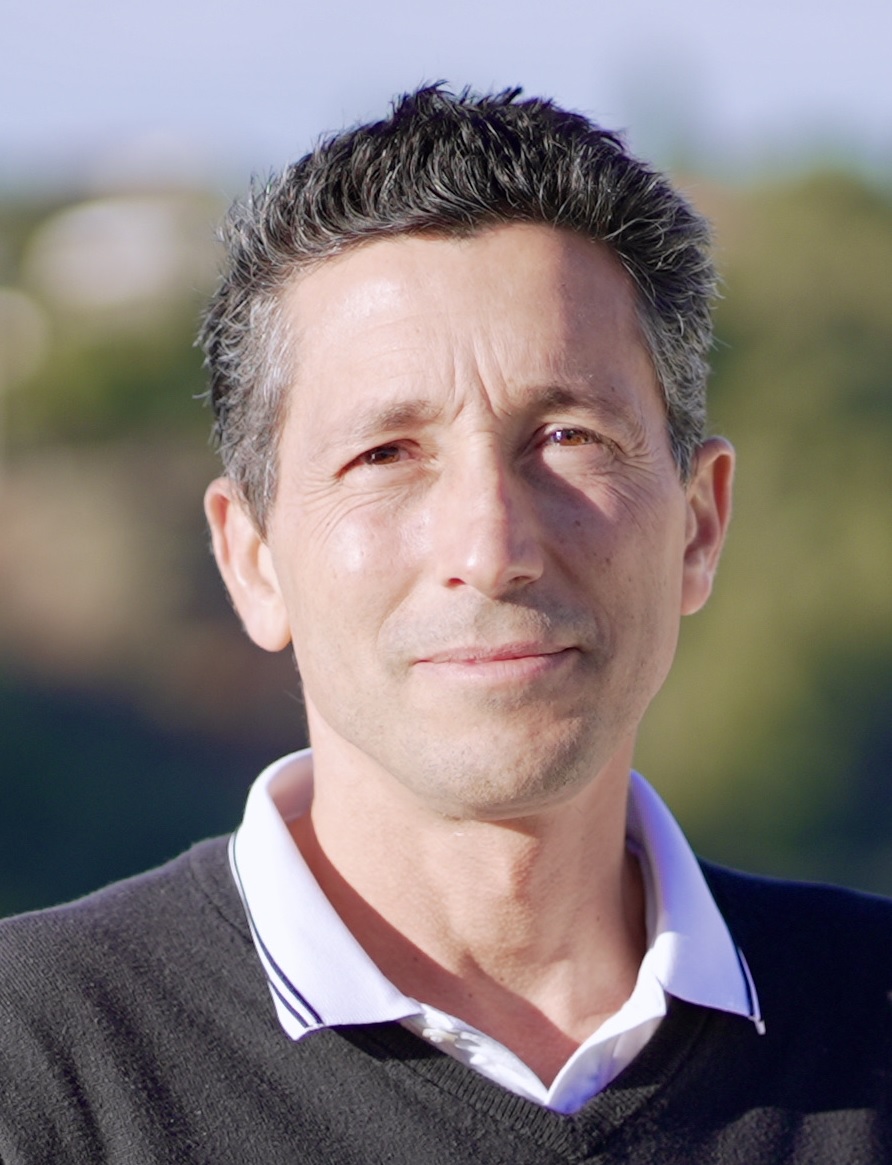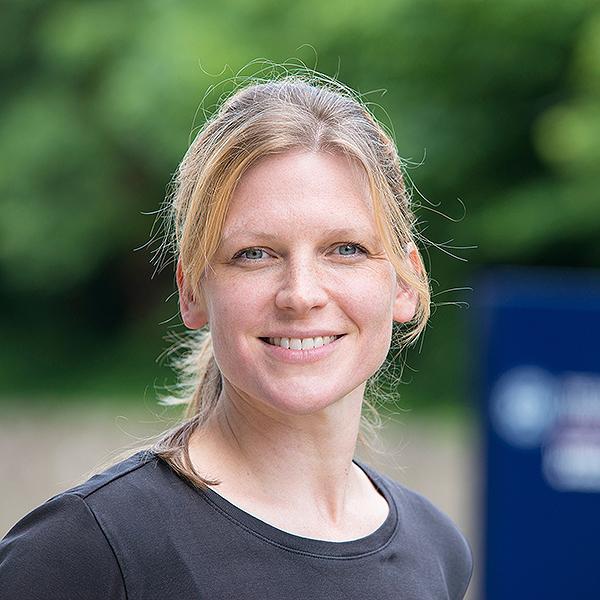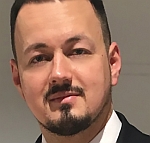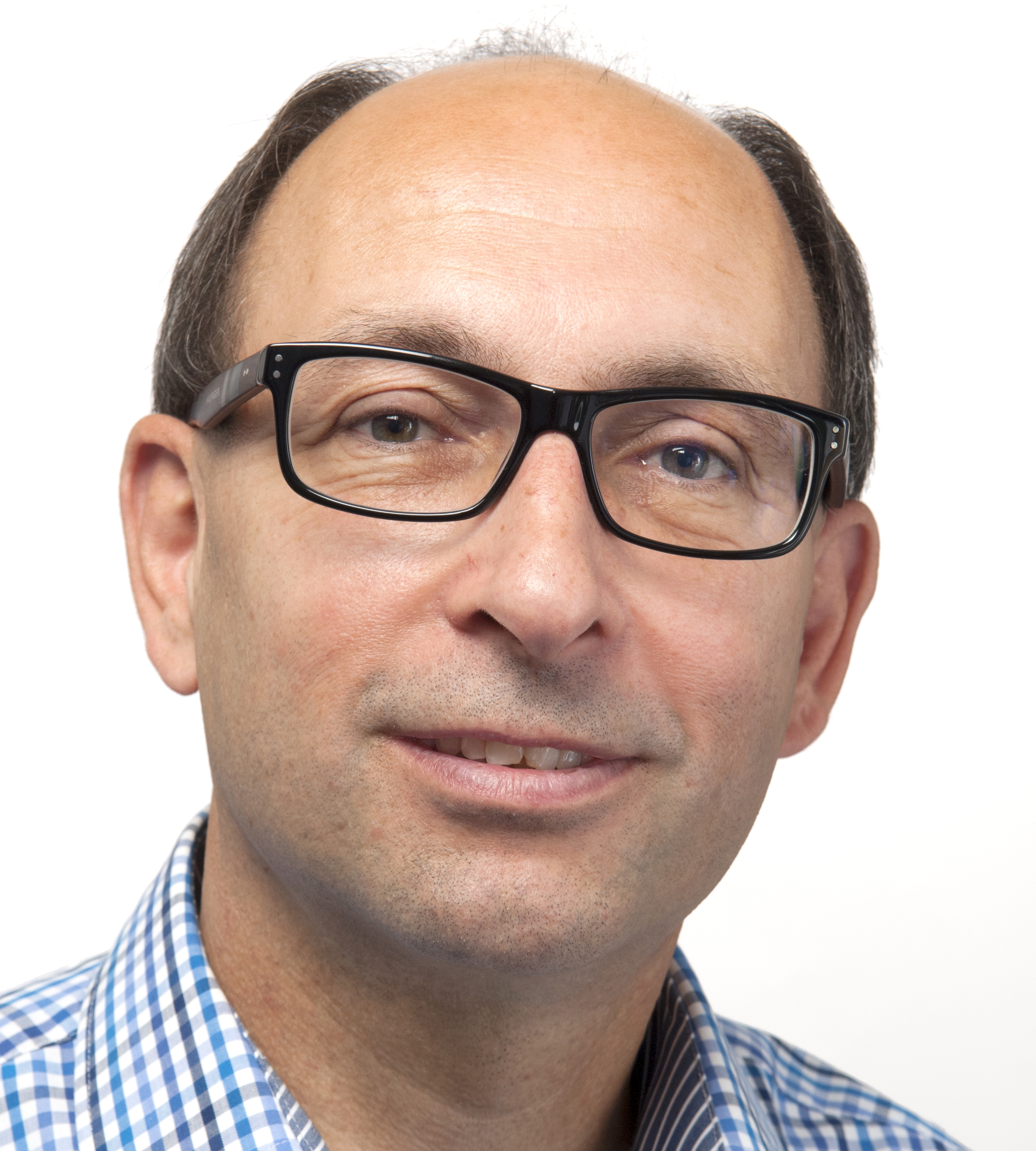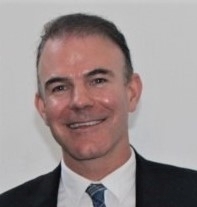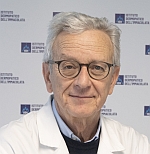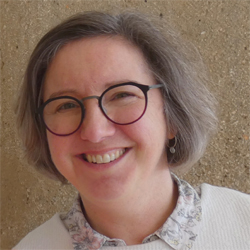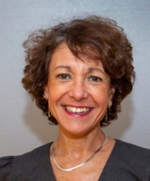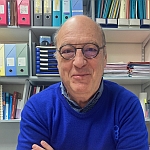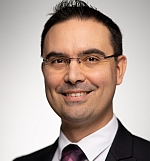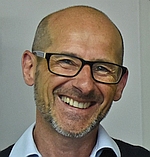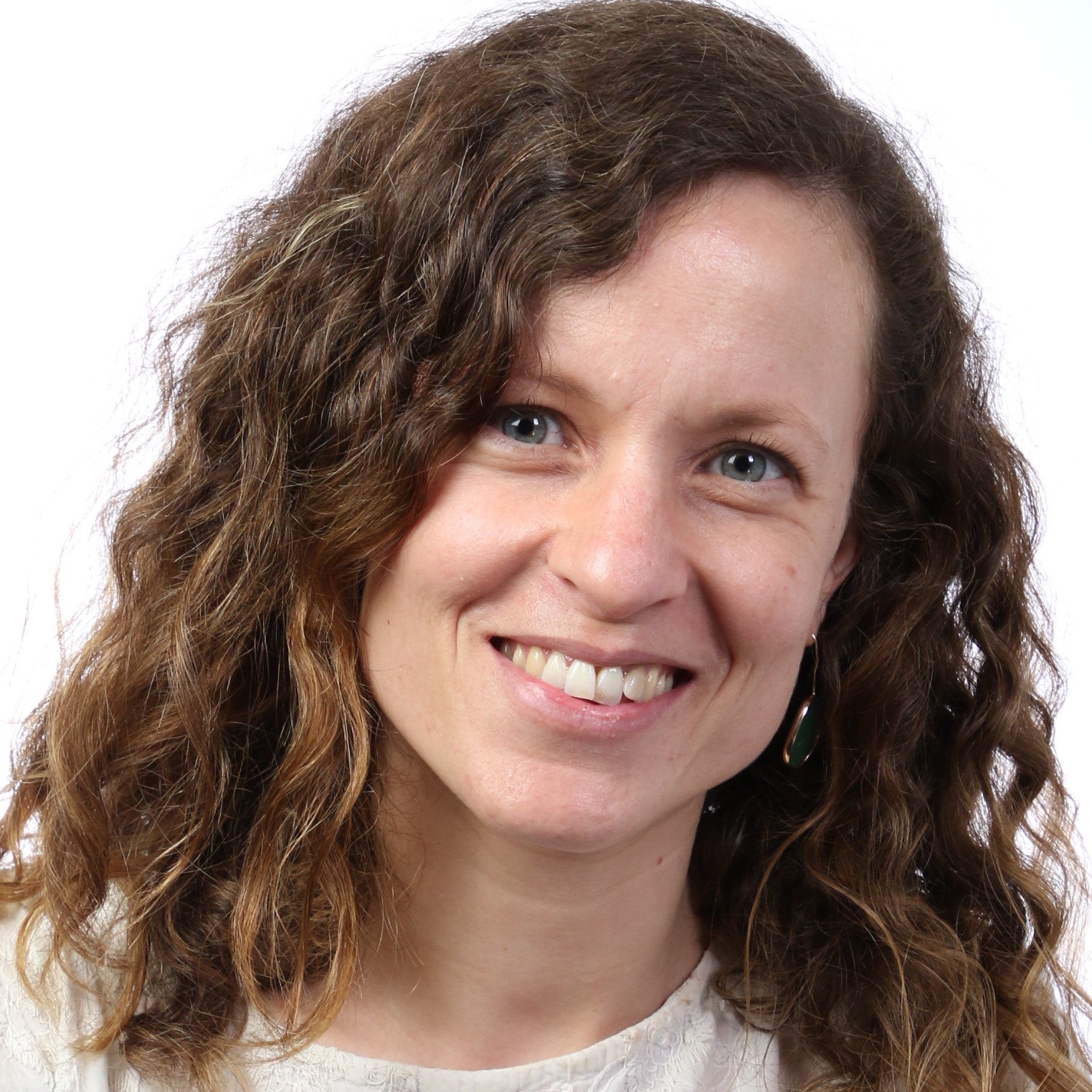
|
|
|
Program & Speakers > Speakers
Keynote speakers
| Speaker | Bio |
|---|---|
Miguel Seabra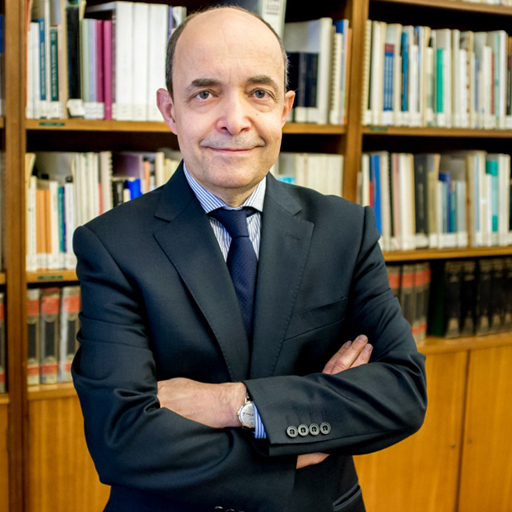 |
Recipient of the ESPCR Award 2024Professor Miguel Seabra is Full Professor and coordinates research in Cellular and Molecular Medicine and holds several chairs at the Medical School of the Universidade Nova de Lisboa, Portugal. Former Head of the Global Eye Initiative at Fundação Champalimaud, Prof. Seabra was president of Fundação para a Ciência e a Tecnologia (FCT), the Portuguese public funding agency for science and research in Portugal from 2012 to 2015. He is a former board member of the ESPCR. The Seabra research group has made major fundamental and translational contributions to understanding the roles of Retinal Pigment Epithelium (RPE) cells, a highly specialized layer of cells in the eye and a fundamental component of the visual unit. In many retinal disorders, including aging, photoreceptor degeneration occurs as a consequence of RPE dysfunction. Prof. Seabra has lead his team to investigate these cellular interactions and propose new therapeutic approaches to preventing or curing loss of vision. |
Richard White
|
Professor Richard White is Full Professor of Genetics and a Senior Group Leader in the Nuffield Department of Medicine and Ludwig Institute for Cancer Research at Oxford University, UK. As a physician-scientist who trained in medical oncology and cancer genetics, Prof. White and his research group have made fundamental discoveries about how neural crest programmes in melanoma affect response to oncogenes, how the anatomic position of the cell determines which oncogenes the cell responds to, and how microenvironmental cells such as adipocytes can promote metastasis. |
Confirmed invited speakers
| Speaker | Bio |
|---|---|
Julien Ablain
|
Dr. Julien Ablain, team leader at the Cancer Research Center of Lyon, France, has a long-standing interest in understanding the mechanisms of tumor initiation and progression, with the goal to discover new vulnerabilities of cancer cells. He trained in the laboratories of Drs. Hugues de Thé in Paris and Leonard Zon in Boston. Dr. Ablain devised a method to inactivate genes in a tissue-specific manner in zebrafish, which allowed him to recapitulate the loss of tumor-suppressor genes in vivo and to rapidly generate zebrafish models of virtually every possible genotype found in human melanomas. He thus established SPRED1 loss as a frequent driver of mucosal melanoma. His recent work has identified the adhesion gene NECTIN1 as a major metastasis-suppressor in melanoma through analyses in human melanoma samples and genetic modeling in zebrafish. Building upon these findings, the Ablain laboratory aims at expanding the current view of the molecular mechanisms regulating early steps of cancer metastasis by investigating the microenvironmental signals that control cancer cell dissemination. |
Igor Adameyko
|
Dr. Igor Adameyko is a Professor and a Department Chair at Center for Brain Research of Medical University of Vienna, Austria, and a group leader at Karolinska Institutet in Stockholm, Sweden. Prof. Adameyko is known for the discovery of multipotency of nerve-associated Schwann cell precursors, a population of neural crest derived cells with exceptional plasticity and distribution in the body. He has obtained a number of prestigious prizes and grants to pursue a developmental biology-informed approach to understanding the competence and potential of nerve-associated progenitors to generate various cell types, including melanocytes, during not only physiological development but also adulthood. |
Duarte Barral
|
Professor Duarte Barral completed his undergraduate studies in Microbiology and Genetics at the University of Lisbon, Faculty of Sciences. Subsequently, he obtained his PhD in Cell Biology from Imperial College London. Duarte Barral did a post-doc at Brigham and Women's Hospital, Harvard Medical School, before assuming the role of Principal Investigator at NOVA Medical School, NOVA University of Lisbon, Portugal. Currently, he holds a tenured Associate Professor position at the same institution and is a current Board member of the ESPCR. Duarte Barral’s research group studies the molecular mechanisms involved in melanin transfer. They have been leading the field by elucidating the mode of melanin transfer in the human skin, uncovering the regulation of melanosome secretion, identifying the internalization route followed by melanin, and shedding light on the processing that melanin undergoes within keratinocytes. |
Katia Boniface
|
Professor Katia Boniface is a professor of therapeutic innovation at the University of Bordeaux, France. She leads the immunodermatology group at the ImmunoConcEpT CNRS UMR5164 unit. Her research focuses on the role of resident T cells (TRM) and their related cytokines during development of skin inflammatory, autoimmune diseases and depigmentations, in particular vitiligo. Prof. Boniface is a board member of the European society for Dermatological Research (ESDR) and the French Society for Dermatological Research (SRD). The translational projects conducted in her team aim to decipher the crosstalk between TRM and epidermal cells, and to characterize how TRM impact epidermal inflammation and regulate melanocyte fate. The ultimate goal is to identify therapeutic targets to prevent the impact of T cells and their cytokines on the epidermis (as for JAK inhibitors, for example) and that could be used as a maintenance or treatment therapy for vitiligo patients to prevent flares or to induce repigmentation. |
Anja Bosserhoff
|
Prof. Anja Bosserhoff, Ph.D., chair of the Institute of Biochemistry, University of Erlangen, received her Diploma of Biology in 1993 from the University of Bielefeld and her PhD in 1995 from the University of Regensburg, Germany. She became lecturer for "Cellular and molecular pathology" in 2000 (Medical Faculty of the RWTH Aachen). In 2002, she joined the Institute of Pathology as Professor of Molecular Pathology; in 2014, she moved to the University of Erlangen as Chair of Biochemistry and Molecular Medicine. Research interests include the systematic analysis of regulation of cell-cell- and cell-matrix attachment, the identification of miR and miR processing in melanoma, and the characterization of molecular mechanisms in melanocytic differentiation. The molecular basis of malignant melanoma has been one of her major research interests since 1993 and she is currently principal investigator of eight funded projects to clarify the role of distinct genes in melanoma development and progression. Dr. Bosserhoff is member of the ESPCR, a founding member of the Society of Melanoma Research and member of its steering committee since 2008, serving as Treasurer since 2012. Anja has chaired several international scientific meetings on melanoma including the SMR meeting in Amsterdam in 2006. She also serves on the editorial board of Pigment Cell and Melanoma Research. |
Pierre Close
|
Dr. Pierre CLOSE obtained his PhD in Biomedical Sciences from the University of Liege (Belgium). In 2006, he was awarded an EMBO fellowship and joined the Cancer Research UK (Crick Institute) for his post-doc where he worked on RNA metabolism and gene expression. Since 2013, he started his own lab at GIGA-Institute (Liège, Belgium) where he investigate the importance to tRNA epitranscriptomics and mRNA translation in the establishment of cancer phenotype. His lab combines in vivo models of cancer, patient-derived material with tRNA and mRNA translation-related omics and classical biochemical approaches to uncover new therapeutic vulnerabilities in cancer. Dr Pierre Close made seminal discoveries in the fields of mRNA translation, tRNA epitranscriptomics and cancer. His lab uncovered the importance of tRNA modifications in the reprogramming of mRNA translation that supports tumor development and phenotype switching in cancer. He received several awards from the Belgian academy of Medicine (2020), the King Baudouin Foundation (2023) and from the worldwide cancer research association (2021). |
Daniela De Zio
|
Dr. Daniela De Zio is the head of the Melanoma Research Team at the Danish Cancer Institute (DCI) in Copenhagen, Denmark. She has a strong background in cell and molecular biology of cancer and mouse genetics. She received her PhD in 2006 from the University of Rome Tor Vergata and carried out post-doctoral research in different institutes in Italy and Denmark. Her research at the DCI aims to elucidate the molecular mechanisms underlying melanoma development and resistance to therapy, both targeted and immune-based therapies, by using preclinical cancer models that mimic the disease's natural progression. Dr. De Zio has been one of the few European grantees of the prestigious Young Investigator Award from the American foundation Melanoma Research Alliance. She is currently Associate Professor in basal and translational cancer research at the Department of Cancer and Inflammation Research, Institute of Molecular Medicine, University of Southern Denmark (SDU). |
Marie-Dominique Galibert
|
Marie-Dominique Galibert is Professor at the Medical School of the University of Rennes, France. She is the Deputy Director of the Institute of Genetics and Development of Rennes (CNRS UMR6290), where she leads the Gene Expression and Oncogenesis research group. At the Hospital University of Rennes, she heads the Cancer Molecular Genetics clinical department. After studying Pharmacy at the University of Paris V, Prof. Galibert undertook a PhD in Human Genetics at the Institut Pasteur, Paris, France. She pursued a European post-doctorate fellowship in the laboratory of Prof. Colin Goding, where she deciphered the biological and pathological processes of melanocytes and melanomas, focussing on the role of UV irradiation in melanocytes. Appointed to the Faculty of Medicine of Rennes in 2000, she developed her own research group within the Institute of Genetics and Development of Rennes - CNRS UMR6290. Former board member of the ESPCR, she presided the 2018 annual meeting. Prof. Galibert now focuses on understanding the genetic, epigenetic and molecular basis of cancer development, to identify new therapeutic targets and new markers. Her team has been granted recognition as “Equipe labellisée LNCC” by the cancer care foundation Ligue Nationale contre le Cancer. |
Michael Hölzel
|
Professor Michael Hölzel, of the Institute for Experimental Oncology at the University of Bonn, Switzerland, has had a long-standing interest in cancer research with a special focus on tumor microenvironment and cancer immunotherapy. His research group uses different types of pre-clinical models, including patient-derived tumor organoids to elucidate mechanisms of therapy resistance to current and novel treatments. In close cooperation with groups from computational biology and mathematics Prof. Hölzel's group aims to establish novel approaches and models to analyze and simulate tumor and immune cell phenotype dynamics in the melanoma microenvironment under immunotherapy. |
Veronica Kinsler
|
Veronica Kinsler is Professor of Paediatric Dermatology and Dermatogenetics at Great Ormond Street Hospital for children and UCL, and Principal Group Leader of the Mosaicism and Precision Medicine laboratory at the Francis Crick Institute in London, UK. She also holds a UK National Institute of Health Research Research Professorship. Prof. Kinsler trained in medicine at Cambridge, paediatrics and paediatric dermatology in London, molecular genetics at UCL, and worked part-time for 15 years to look after her family. Prof. Kinsler’s clinical work is focused on rare paediatric skin conditions, in particular mosaic and/or pigmentary disorders. Laboratory research is focused on identifying the genetic causes, and design or repurposing of targeted therapies. In parallel, the lab extrapolates findings to gain valuable insights into common conditions such as melanoma, and into normal human embryology. She is the past President of the ESPD, senior editor of the Harper textbook of Pediatric Dermatology, and director of Paediatric Dermatology Online Courses www.paediatric-dermatology.com |
Konrad Kleszczynski
|
Dr. habil. Konrad Kleszczynski is an associate Professor in the Department of Dermatology, University of Münster, Germany. His research over the last two decades has focussed on cell signalling, cell biology, bioenergetics, melanogenesis, dermatoendocrinology, and photobiology. Prof. Kleszczynski's scientific interest is in investigating the biological meaning of pineal indoleamines, most notably melatonin and its metabolites. After a Ph.D. obtained in 2009, Dr. Kleszczynski had a postdoctoral position in the Department of Dermatology of the University of Lübeck, Germany where he then became a Principal Investigator in 2015. After being recruited in 2018 by the University of Münster, he became a group leader in Molecular Dermatoendocrinology with particular expertise in the field of melatonin. Current research themes assess the role of melatonin as a regulatory molecule controlling melanogenesis, its counteracting capacity against UVR-induced damages in human skin, as an add-on in wound healing processes and as a potential booster of targeted therapies for patients with melanoma. |
Luisa Lanfrancone
|
Dr. Luisa Lanfrancone directs the Melanoma group in the Department of Experimental Oncology of the European Institute of Oncology (IEO) in Milan, Italy. She is a faculty member of the European School of Molecular Medicine (SEMM) in Milan. After her Ph.D. from the University of Torino, Dr. Lanfrancone had postdoctoral positions at the Department of Pathology of the New York University Medical Center, then in Turin, Perugia and finally Milan, where she established her group at the IEO. Dr. Lanfrancone's research has mainly focused on the study of signal transduction mechanisms mediated by receptor activation and oxidative stress in cancer and aging. Her group has identified some of the molecular pathways involved in the progression of non-invasive, locally growing to more aggressive, metastatic melanomas. These studies allowed the establishment and characterization of model systems of melanoma progression in vitro, from primary cultures of normal human melanocytes and melanomas, and in vivo, by generating transgenic animals and patient-derived xenografts. More recently, the Lanfrancone lab has applied in vivo RNAi-based screenings of epigenetic and metabolic targets and kinase genes to study melanoma, breast and pancreatic cancer pathogenesis, leading to proposals for more effective combination therapies. |
Eleonora Leucci
|
Dr. Eleonora Leucci obtained her PhD in Medical Biotechnology from the University of Siena (Italy) in 2007. Her doctoral work on miR-34 received the “Journal of Pathology Jeremy Jass Prize” as a highly commended paper in 2008. She then moved to BRIC, University of Copenhagen (Denmark), where she worked on short and long non-coding RNAs funded by an FSS postdoctoral grant in the lab of Dr. Anders Lund. Since 2012, she has been working in Belgium, first as a Marie Curie/VIB postdoctoral fellow in Dr. Chris Marine’s lab and then as then as a prize-winning FNRS research associate at ULB. Dr. Leucci has been directing the Laboratory for RNA Cancer Biology since 2017 and heads the PDX platform TRACE at KU Leuven. In 2018, she was awarded the “Melanoma Research Alliance Young Investigator award” to study RNA metabolism in melanoma, with a particular focus on the characterization of long non-coding RNAs important for therapy resistance. |
Mitchell Levesque
|
Prof. Mitch Levesque, PhD is an associate professor of dermato-oncology at the University of Zurich, and Scientific Department Leader in the Department of Dermatology at the University of Zurich Hospital. After completing his Master’s degree in Genetics at New York University in 2002 and a PhD in Genetics & Genomics at Duke University in 2005, he conducted post-doctoral research at the Max Planck Institute in Tübingen Germany, and then started his own group at the University of Zurich in 2011. Prof. Levesque is head of the University Research Priority Program (URPP) translational cancer biobank at the University of Zurich, and from 2018-2021 was head of Research and Development of the multi-institutional Tumor Profiler Project. An international leader in translational oncology, he is the co-founder of two spin-off companies (Oncobit and Lumaros) and author of numerous publications. |
Carmit Levy
|
Prof. Carmit Levy is a member of the Department of Human Molecular Genetics & Biochemistry at the Sackler Faculty of Medicine, Tel Aviv University (Israel). The interests of her research group are in the role of microRNAs in development, differentiation and malignant transformation. Focusing her studies on melanocytes aims to provide the foundation for developing novel approaches in the prevention, diagnosis, and treatment of skin cancer in general and melanoma in particular. In addition, she is intrigued by the possibility of using these systems as a model for exploring basic microRNA biogenesis beyond the cell-specific context. |
Svenja Meierjohann
|
A molecular biologist by training, Professor Svenja Meierjohann spent the first stages of her academic education at the Universities of Würzburg, Stellenbosch, Dundee and Hamburg, where she did her PhD on the redox metabolism of Plasmodium falciparum. In 2003, she switched gears and joined the melanoma field. Since 2020, Prof. Meierjohann is Professor of Tumor Biochemistry at the Institute of Pathology in Würzburg, Germany, with a focus on the melanoma stress defense and thiol metabolism. |
Shahram Mesdaghi
|
Dr. Shahram Mesdaghi is a member of Professor Daniel Rigden's research group within the Institute of Systems, Molecular, and Integrative Biology at the University of Liverpool, UK. His primary research focus lies in Protein Bioinformatics, where he specializes in utilizing a variety of bioinformatics tools to analyse proteins of interest. His expertise allows him to predict the structure and functions of uncharacterized proteins. Additionally, Dr. Mesdaghi is affiliated with the Computational Biology Facility at the University of Liverpool. In this role, he applies structural bioinformatic tools to investigate the generation of medin and the functionality of serine/threonine human kinases. In an upcoming presentation, Dr. Mesdaghi will discuss his past work, highlighting how recent advancements in computational structural biology have provided opportunities to reassess our current understanding of the structure and function of clinically significant proteins, with a specific focus on Oca2 (P-protein). |
Lluis Montoliu
|
Professor Lluis Montoliu is a biologist, CSIC Research Scientist and Deputy Director at the National Centre for Biotechnology (CNB) and member of the Steering Committee of the Spanish Research Initiative on Rare Diseases, in Madrid, Spain after working in Heidelberg and Barcelona. He is the Director of the Spanish node of the European Mouse Mutant Archive (EMMA/INFRAFRONTIER). He has been Honorary Professor at Universidad Autónoma de Madrid and is currently Honorary Professor at the Universidad Complutense de Madrid (UCM). At the CNB, since 1997, Prof. Montoliu leads a research team interested in basic science (genome organization), and in applied biomedical science, using animal models for the study of human rare diseases, such as albinism. Lluis is currently president of the ESPCR after many years on its board, and has been honored with the H.S. Raper Medal from the International Federation of Pigment Cell Societies for his many contributions to the fields of pigmentation and albinism. |
Fanny Morice-Picard
|
Dr. Fanny Morice-Picard started her medical studies in Rouen. She moved to Bordeaux as a resident where she was trained in medical genetics and dermatology. She did a Masters in Molecular Genetics in Paris (Hôpital Necker-INSERM U393) in 2003-2004. Specializing in Medical Genetics (University of Bordeaux, 2007), Fanny obtained her PhD in Biological Sciences “Molecular Her main professional activities include management and care of patients with rare inherited skin disorders and research on physiopathology and genetics causes of skin diseases. As a clinician, she is involved in the development of multidisciplinary approach of rare skin disorders including albinism, while her research interests span DNA repair disorders and pigmentary disorders. She collaborates with the molecular genetic diagnostic laboratories and took part in the design of sequencing panels dedicated to genetic dermatological diseases. |
Thierry Passeron
|
Professor Thierry Passeron is Chair of Dermatology in the University Hospital of Nice, France. He also heads the team 12 of the INSERM laboratory U1065, C3M, dedicated to the study of molecular mechanisms involved in pigmentation and melanoma. With 14 international patents and numerous publications, Prof. Passeron is co-founder of YUKIN therapeutics and studies pigmentary disorders (including vitiligo and melasma), melanoma, hidradenitis suppurativa, alopecia areata and lasers. Thierry has organized conferences on vitiligo and is on the organizing committee of this meeting. |
Liz Patton
|
Dr. E. Elizabeth Patton received a BSc Honours degree from King’s College at Dalhousie University, and a PhD from the University of Toronto, working with Mike Tyers to discover how E3 ubiquitin ligases control cell division. Following this, Liz received a Human Frontier Science Programme Postdoctoral Fellowship to work with Professor Len Zon at Harvard Medical School, where she developed a zebrafish model for melanoma. Her lab, at the Institute of Genetics and Cancer, MRC Human Genetics Unit, University of Edinburgh, Scotland, uses chemical genetic approaches in zebrafish to investigate gene-drug interactions in melanocyte development, as well as in melanoma biology. Dr. Patton is a Handling Editor at Disease Models and Mechanisms (Company of Biologists, Cambridge UK), and serves as an editorial board member for Pigment Cell and Melanoma Research (Wiley). Dr. Patton was the founding President of the Zebrafish Disease Models Society (2013-2015) and currently serves as a Board member, and is an elected member of the Young Academy of Scotland at the Royal Society of Edinburgh, and former ESPCR board member. Dr. Patton’s research is funded by the Medical Research Council, the European Research Council, the Wellcome Trust, and a L’Oréal Paris USA–MRA Team Science Award for Women in Scientific Research. |
Michal Sarna
|
Michal Sarna is an assistant professor at the Department of Biophysics, Faculty of Biochemistry, Biophysics and Biotechnology, Jagiellonian University in Krakow, Poland. He obtained his doctoral degree in Physics at the Faculty of Physics and Applied Computer Science, University of Science and Technology in Krakow, Poland in 2015. His scientific interests are focused on the mechanical role of melanin in pigmented cells and tissues, in particular cells of the skin. |
Tatjana Sauka-Spengler |
Tatjana Sauka-Spengler, Ph.D., is both a physicist and developmental geneticist. Tatjana completed a B.S. in physics at the University of Sarajevo when the Bosnian war began and ultimately obtained a first Ph.D. in physics from the University of Paris (France) before going on to pursue a second Ph.D. in developmental and evolutionary biology, also from the University of Paris. As a postdoctoral fellow at the California Institute of Technology (USA), Tatjana pioneered key methodologies to study gene regulation in chick embryos and developed novel techniques for elucidating lamprey and zebrafish genomics. In 2011, Sauka-Spengler joined the Weatherall Institute of Molecular Medicine at the University of Oxford as a group leader and research fellow before being promoted to associate professor in genome biology in 2014 and professor of developmental genomics and gene regulation in 2020. In 2022, she joined the Stowers Institute as an investigator. The Sauka-Spengler Lab investigates genetics, gene regulation, and regulatory networks underlying development and regeneration in a variety of research organisms. They have been instrumental in dissecting the gene regulatory networks essential to the development of neural crest cells, the embryonic cell population that gives rise to pigment cells throughout the body. |
Lukas Sommer
|
Lukas Sommer is a full professor at the Institute of Anatomy of the University of Zurich and the current Director of the institute. Lukas Sommer is Co-Director of SKINTEGRITY.CH, a research initiative that brings together experts from multiple disciplines with the aim to better understand, diagnose and treat acute and chronic skin defects and malignant skin diseases. His research focuses primarily on neural crest development and stem cell populations within that lineage. His studies address how embryonic programs related to neural crest development are hijacked and used in the adult organism during tumorigenesis and tissue regeneration. |
Desmond Tobin
|
Professor Desmond J. Tobin, PhD, is Full Professor of Dermatological Science and Director of the Charles Institute of Dermatology, University College Dublin, Dublin, Ireland. He holds a BSc from the National University of Ireland (Maynooth), a PhD from the University of London, UK (St. John’s Institute of Dermatology) and post-doctorate from New York University Medical School’s Department of Dermatology, USA. Prof. Tobin leads a team of researchers in basic and applied skin/hair sciences, with a focus on skin/hair pigmentation in health and disease and on immune-mediated hair growth disorders. Recently, he has received Irish-government funding to assess the homeo-dynamic status of heterogeneous subpopulations of normal human cutaneous melanocytes as a paradigm for understanding melanoma-genesis. Des is past president of the British Society for Investigative Dermatology, and recently served on a UK-based Research Excellence Framework (REF2021) panel. |
Meri K. Tulic |
Dr. Meri Tulic is a Research Director at the INSERM laboratory U1065, C3M, in Nice, France. She is a trained immunologist (University of Western Australia) now working with Prof. Thierry Passeron. Her research theme is immunoregulation of skin diseases using multidisciplinary approaches in bench-to-clinic translational studies in humans, with particular focus on pigmentary disorders including vitiligo. Her team aims to understand the early triggers of this disease by studying the impact of cutaneous micoenvironment and targeting innate immunity in its pathogenesis, for early prevention of the disease. Meri is an ESPCR Board Member and on the organizing committee of this meeting. |
Session Chairs
| Chair | Session (see Program) and Bio |
|---|---|
Mauro Picardo
|
Vitiligo, hair graying & other acquired pigmentary disordersProfessor Mauro Picardo is a former board member and President of the ESPCR. Professor of Dermatology at the UNICAMILLUS International University and clinical researcher at the Istituto Dermopatico Immacolata in Rome, he was trained at the Rome University “La Sapienza”. Prof. Picardo was the director of the Cutaneous Physiopathology Laboratory and Integrated Center of Metabolomic Research and Scientific Director at the San Gallicano Dermatological Institute in Rome. The main topics of interest of his research group are skin biochemistry and metabolism, free radicals mediated damage, skin lipidomics, mechanism of control of skin pigmentation, pigmentary disorders, particularly Vitiligo and Melasma, acne, and related disorders. Prof. Picardo has organized several national and international conferences, including the First International Vitiligo Symposium in Rome in 2016. With Prof. Alain Taieb, he co-edited the textbook Vitiligo (Springer-Nature) and is chair of the Vitiligo European Task Force and the Pigmentary Disorders group of the EADV. |
Heather Etchevers
|
Cutaneous mosaicism and cell-cell interactionsDr. Heather Etchevers obtained a joint Ph.D. in molecular and cell biology from the University of California at Berkeley (US) and the Université Pierre et Marie Curie (Paris 6, France) in 1999-2000. After a postdoc in human genetics and embryology at the Necker Children’s Hospital in Paris, Heather obtained a tenured position at INSERM. Translational and collaborative interfaces have reinforced her motivation to understand the pathophysiological mechanisms of birth defects. Dr. Etchevers co-directs the Mechanisms of Paracrine and Endocrine Disorders team at Marseille Medical Genetics, affiliated with INSERM and Aix-Marseille Université (France). One major focus of her group is on somatic and germline RASopathy syndrome endophenotypes, particularly pigmentary, as models to understand more general principles of fate specification. The team studies the impacts of key effectors of growth factor transduction on development and the onset of multi-systemic birth defects. Heather is an ESPCR Board Member and chairs the organizing committee of this meeting. |
Graça Raposo
|
Melanosome lifecycle, including trafficking, cell biology & melanin biochemistryDr. Graça Raposo is Research Director at CNRS and a team leader at the Institut Curie, Dept of Cell Biology and Cancer, Paris, France. She is a renowned cell biologist interested in lysosomes and related organelles, extracellular vesicles and human skin pigmentation and her work has further impacted the fields of immunology, cancer and neurodegenerative diseases. Dr. Raposo has been recognized with the French CNRS Silver Medal, the Descartes-Huygens Prize of the Royal Dutch Academy, the ISEV (International Society for Extracellular Vesicles) achievement award, the Grand Prix Raymond Castaing from the French Society for Microscopy, the Mrs. Urmilla Agrawal Distinguished Professor for “Women in Science” of the Indian Institute of Sciences in 2022, and has received a Doctor Honoris Causa from Oslo University, Norway. |
Lionel Larue
|
Melanocyte development and differentiation, including extracutaneous pigmentationDr. Lionel Larue is Research Director at the Institut Curie in Orsay, France. His lab studies melanocyte development and genetics, homeostasis, and transformation. They aim to understand the molecular and cellular mechanisms of melanocyte and melanoma development. Over the last 25 years, Dr. Larue's research has been addressing the establishment of melanocytes from melanoblasts, renewal from stem cells and focuses on signal transduction and gene regulatory networks concerning β-catenin, MITF/BRN2, and the MAPK and PI3K signaling pathways. Dr. Larue is former President of the ESPCR and was awarded the Henry Stanley Raper Medal at the IPCC2017 conference in Denver, Colorado (US). |
Stéphanie Mallet |
Melanocytic nevi: clinical and mechanistic facets, including melanocytomas, congenital and atypical neviDr. Stéphanie Mallet is an onco-dermatologist at the Timone Hospital in Marseille. She is in charge of the center of competence for superficial vascular anomalies and the center of competence for rare skin and mucous membrane diseases of genetic origin. She also coordinates the dermatology therapeutic education programs run by the Marseille public hospitals. Dr. Mallet trained in medicine at Aix-Marseille University, specializing in dermatology and venereology, before specializing in pediatric dermatology in collaboration with the Parisian pediatric dermatology team at Necker. She participated in the Franch national care protocol for congenital nevi. Dr. Mallet's clinical work focuses on pediatric skin disorders. She is currently President of the pediatric dermatology research group of the Société Française de Dermatologie. |
Colin Goding
|
Melanomagenesis and metastasis, including uveal, acral, mucosal and juvenile melanomaProfessor Colin Goding completed a PhD in virology at the National Institute for Medical Research, London, UK, working on adenovirus DNA replication. He then moved as a post-doc to Pierre Chambon’s lab in Strasbourg, France, where his interest in gene regulation developed. At the Marie Curie Research Institute, he continued working on how genes are controlled, both in S. cerevisiae, as well as in melanocytes and melanoma. His work revealed how transcription factors could discriminate between different classes of binding motif, and identified the basis for regulation of melanocyte-specific genes. In 2008, he moved to the Ludwig Institute for Cancer Research, University of Oxford, UK to take up the position of Professor of Oncology, where he continues to examine the role of signaling and transcription in melanoma biology. Prof. Goding has made a major contribution to understanding the molecular mechanisms underpinning melanoma cell plasticity and developed the concept of phenotype-switching that drives metastatic dissemination and therapy resistance. More recently, he uncovered the critical role of translation reprogramming in cancer progression, and has identified a key regulator of lipid homeostasis as a major determinant of phenotypic identity. Former member of the ESPCR board, he was elected EMBO member in 2008 and Director of the Oxford Stem Cell Institute in 2015. |
Lionel Larribère
|
Technological advances in melanoma detection, including biomarkers and non-invasive imagingDr. Lionel Larribère is a molecular biologist with long-standing experience in translational research in the field of dermato-oncology. After defending his PhD at the University Côte d'Azur, Nice (France), he worked at several renowned research institutes such as the University of Michigan (USA) and the Spanish and the German National Cancer Research Centers (CNIO and DKFZ). He also guest-edited a special issue of the Journal of Clinical Medicine entitled "New advances in Melanoma" in 2019. Recently, Dr. Larribère began a new position as Head of the Molecular Tumor Diagnostics subdivision at the SLK Clinic in Germany. |
Eiríkur Steingrímsson
|
(Epi+)genetics and regulatory networksProfessor Eiríkur Steingrimsson earned his Ph.D. at the University of California, Los Angeles (UCLA) and his postdoctoral training at the National Institutes of Health, Maryland (US). He is Professor of Molecular Biology at the University of Iceland. Eiríkur has extensive experience in gene transcription with a specific focus on gene regulation in melanoma. He is one of the founders of Akthelia Pharmaceuticals (Iceland) and has served on various other boards and review panels. |
Benoît Arveiler
|
Albinism & other hereditary pigmentary disordersDr. Benoit Arveiler is a molecular biologist who has been involved in the genetics of albinism over the last 20 years. His laboratory in Bordeaux, France, manages a cohort of more than 2000 patients, aiming to improve diagnosis, study phenotype-genotype correlations and identify pathogenic non-exonic variants. They recently identified the genes responsible for OCA8 and HPS11, and identified a complex haplotype comprising coding and non-coding variants in the TYR gene. |
Nausicaa Malissen
|
Innovations in therapyUnfortunately, other duties have prevented Prof. Marie-Aleth Richard from attending, but her colleague, Dr. Nausicaa Malissen, has graciously accepted to chair this session in her stead. Dr. Malissen is Assistant Professor in the Dermatology and Skin Cancer department of La Timone Hospital, APHM, Marseille, France. She is a dermato-oncologist involved in the management of melanoma and other skin cancers from initial diagnosis to treatment of metastases . She is an investigator for numerous clinical trials with the Dermatology department and at the Early Phase Trial Unit (CEPCM, CLIP2) and the head of the Oncosafety network of all specialists managing cancer-treatment-induced toxicities. After her Ph.D at the Centre de Recherche en Cancérologie de Marseille (CRCM) studying the HVEM/BTLA pathway, she undertook a post-doctoral position at the Precision Immunology Institute of the Icahn School of Medicine (PrIISM) and Human Immune Monitoring Center at Mount Sinai, in New York, USA. She worked on scRNAseq and CITEseq strategies to identify and characterize resident and circulating cells involved in responses to immunotherapy . Dr. Malissen is currently affiliated with the Immunity and Cancer department at the CRCM and conduct studies on biomarkers of efficacy and toxicity in melanoma. |
